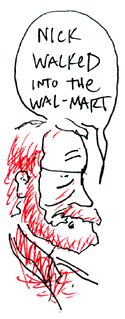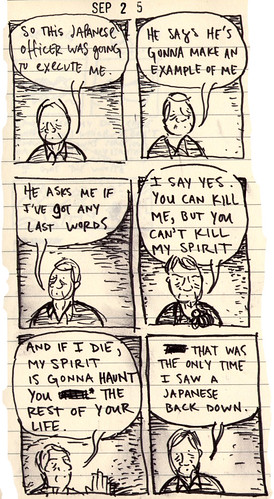
“Every writer is every writer they’ve loved and quarrelled with who came before, as every parent is every parent they loved and quarrelled with.”
—Hilton Als
Watching Ken Burns’ Hemingway, I was reminded of the great Elmore Leonard, who said, “I used to read a lot of him till I learned he had no sense of humor.”
He expanded this thought in a Fresh Air interview:
I had studied Hemingway so closely and learned a lot, but I didn’t agree with his attitude about life, about himself. He took everything, himself, everything so seriously. And, your style comes out of your attitude — what kind of a person you are, you know, your personality, how you see things. Are you optimistic? Are you funny? Are you grim? What? This is all out of your attitude. And once I learned that, then I had to find other writers to study and imitate.
This is an old, old story: the student imitates the master, learns what they can, but then has to move on (often to imitating someone else) if they’re to find their own thing.
This jumping of influences usually happens over and over — Billy Collins says your voice usually comes from copying a half dozen other writers and becoming a blend. (And Hemingway himself once said, “We are all apprentices in a craft where no one ever becomes a master.”)
As I kept watching the documentary, it was emphasized over and over again by the talking heads how influential Hemingway is, how impossible it is for writers not to be influenced by Hemingway. (Once again, our grammar of influence seems to me inadequate. We talk about influence backwards.) It got me thinking I’d watch a whole documentary about writers talking about how they got themselves out from under the influence of their writer heroes.
 Another favorite writer of mine who talks about getting out from under the influence of Hemingway is George Saunders. In several talks, he’s talked about being a young man and having a “medical condition called a ‘Hemingway-Boner.’” He describes his early stories as going something like, “Nick walked into the Wal-Mart. It was pleasant.”
Another favorite writer of mine who talks about getting out from under the influence of Hemingway is George Saunders. In several talks, he’s talked about being a young man and having a “medical condition called a ‘Hemingway-Boner.’” He describes his early stories as going something like, “Nick walked into the Wal-Mart. It was pleasant.”
In a Talk at Google, Saunders explained that if a writer is lucky, they get to a point where they realize that the voice that they’re imitating simply can’t cover their own worldview. A new voice is needed. “That is a holy moment for a young writer,” Saunders says, “when you start getting full body impatient with your mentor.”
Like Leonard, Saunders discovered that his own comedic worldview didn’t match Hemingway’s more tragic one:
What I got tired of in Hemingway was that he, in his later work especially, he wasn’t funny. He didn’t have any sense of humor actually. He knew very well who the noble, interesting people were and so on.
And my life was not — I never lived a Hemingwayesque moment really.
I remember as a young kid coming out of a funeral– a very sad, terrible thing. But the funeral was being held in a mock Georgian mansion—one of those mansions that had been put up just to be a funeral parlor.
And then you walk out of that, and everyone’s crying and it’s terrible. And across the street, there’s a Chuck E Cheese. And the mouse is on break. And he’s on the side of the building with his head off. And he’s smoking.
So that moment could not show up in Hemingway. He couldn’t do it. He had a stylistic cave he had made for himself.
And I thought, that’s where the gateway to style is. And when you see something in your life, in your heart, in your world that the style of your hero can’t accommodate, then it’s a time for growth.
Or, as Brancusi put it, when he left Rodin’s studio, “Nothing grows under big trees.”
